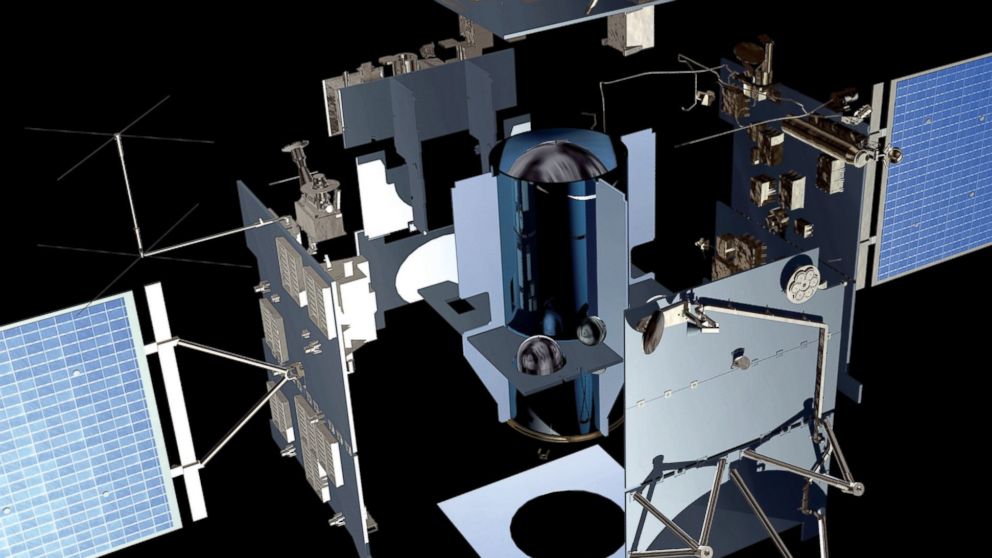Rosetta: What Scientists Hope to Learn From Historic Comet Landing
— -- Rosetta spacecraft's Philae lander is approaching a comet this morning for a historic landing that could yield new insights about the origins of the universe.
Scientists at the European Space Agency and NASA are watching closely to see if they can make history with the unmanned vessel, which is set to touch down on Comet 67P/Churyumov-Gerasimenko this morning after a 10-year, 4 billion-mile journey.
The spacecraft is scheduled to land at 8:30 a.m. ET, and by 11 a.m. ET, scientists will know if it hit its target and is functioning.
Once on the comet, Rosetta's lander, Philae, will shoot a harpoon into the porous surface, allowing it to fix itself to the comet.
The goal of the mission is to learn more about exploring the origins of comets, stars and planets.
Philae will then take and transmit the first-ever images of what a comet's surface looks like up close. The lander will also drill into the comet's surface to glean new insight into its composition.
The lander remain active for two and a half days, according to NASA. Meanwhile, Rosetta will orbit the comet through the next year, gathering data on how the comet acts at different levels of exposure to the sun.
Rosetta was launched in March 2004 from Europe's spaceport in Kourou, French Guiana. In January, the spacecraft "woke up" after a 31-month long hibernation period, tweeting "Hello World." Rosetta made history in August when it became the first probe to rendezvous with a comet as it journeyed around the sun. It has been in an elliptical orbit around the comet since then, with the closet point being about 18 miles.




